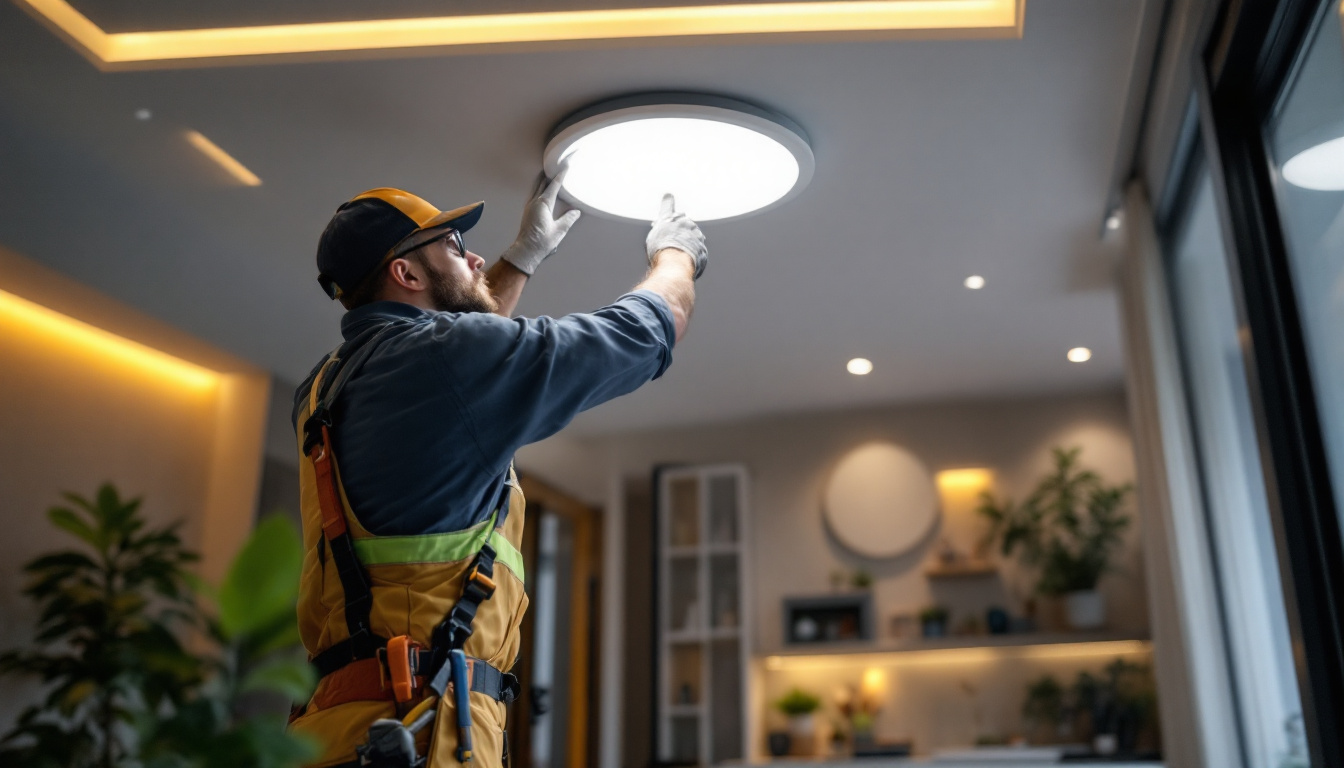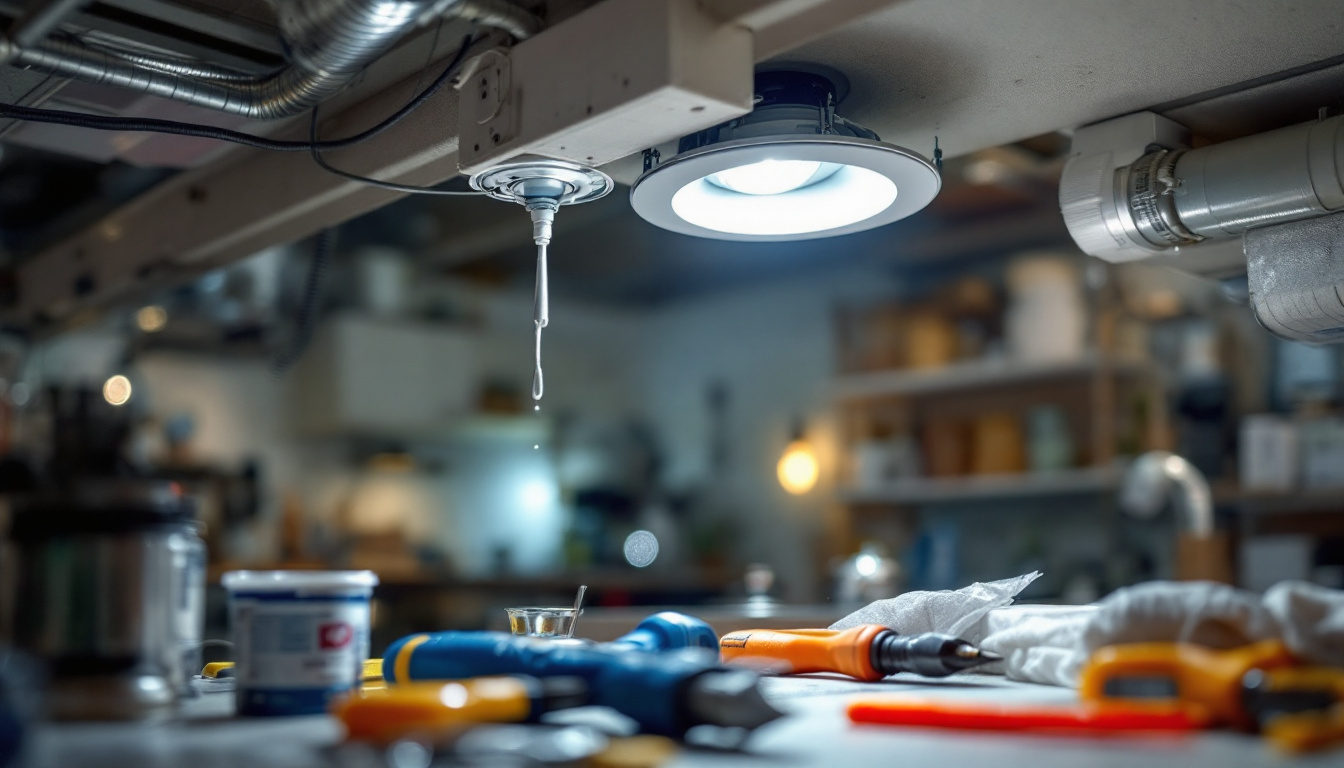
In the ever-evolving world of lighting design, recessed LED ceiling lights have emerged as a popular choice for both residential and commercial spaces. Their sleek, unobtrusive design and energy efficiency make them a preferred option for many contractors. However, successfully integrating these fixtures into a project requires a solid understanding of their specifications, installation techniques, and design implications. This article provides essential tips for lighting contractors to effectively work with recessed LED ceiling lights.
Before diving into the installation process, it’s crucial to understand what recessed LED lighting entails. These fixtures are installed into a hollow opening in the ceiling, creating a clean and modern appearance. They can be used for various applications, from general illumination to accent lighting. The seamless integration of recessed lighting into the ceiling not only enhances the aesthetic appeal of a space but also maximizes the use of available light, making rooms feel more spacious and inviting.
Moreover, recessed LED lighting can be strategically placed to create layers of light, improving the overall ambiance of a room. By combining different types of recessed fixtures, homeowners can achieve a balanced lighting scheme that highlights specific areas while maintaining a warm and welcoming atmosphere.
Recessed LED lights offer numerous advantages that make them appealing to both contractors and clients. Firstly, they are energy-efficient, consuming significantly less power than traditional incandescent bulbs. This not only reduces electricity bills but also contributes to a lower carbon footprint. The energy savings can be particularly beneficial in large commercial spaces, where lighting can account for a substantial portion of energy expenses.
Additionally, these lights have a longer lifespan, often lasting up to 25,000 hours or more. This longevity reduces the frequency of replacements, which can be a significant advantage in commercial settings where maintenance costs are a concern. Furthermore, the durability of LED technology means that these fixtures are less prone to breakage, making them a reliable choice for high-traffic areas.
There are various types of recessed LED fixtures available, each designed for specific applications. Some common types include:
In addition to these common types, there are also specialized fixtures such as shower and wet location housings, which are designed to withstand moisture and humidity. These fixtures are perfect for bathrooms or outdoor areas, ensuring that your lighting remains functional and safe in challenging environments. Moreover, smart recessed LED fixtures are becoming increasingly popular, allowing users to control brightness and color temperature via smartphone apps or voice commands, adding another layer of convenience and customization to modern lighting solutions.
Proper installation is critical to ensuring optimal performance and aesthetics. Lighting contractors must pay attention to several key factors during the installation process.
The type of ceiling plays a significant role in the installation of recessed LED lights. For instance, drywall ceilings typically require different housing than those made of plaster or wood. Understanding the structural elements of the ceiling can help determine the best approach for installation.
Moreover, it’s essential to consider the ceiling height. In spaces with lower ceilings, shallow fixtures may be necessary to prevent a cramped feel. Conversely, higher ceilings can accommodate deeper fixtures, allowing for more powerful lighting options. Additionally, the choice of trim and finish can greatly influence the overall look of the installed lights. For example, a baffle trim can help reduce glare, while a reflector trim can enhance brightness, making it crucial to select the right style that complements the room’s design.
Ensuring that electrical wiring is up to code is paramount. Contractors should familiarize themselves with local electrical codes and regulations to avoid potential issues during inspections. This includes ensuring that the fixtures are rated for the intended application, particularly in areas where moisture is present, such as bathrooms or kitchens.
Additionally, proper wiring techniques must be employed to ensure safety and functionality. This includes using the correct gauge of wire and ensuring all connections are secure. Utilizing junction boxes and following manufacturer guidelines can help mitigate risks associated with electrical installations. Furthermore, considering energy efficiency is essential; using LED fixtures not only reduces energy consumption but also minimizes heat output, which can be particularly beneficial in enclosed spaces. It’s also advisable to incorporate dimmer switches that allow for adjustable lighting levels, enhancing the versatility of the space while promoting energy savings.
Lighting design is not just about functionality; it also involves creating an inviting atmosphere. The placement and type of recessed LED lights can significantly impact the overall aesthetic of a space. Thoughtful lighting can transform a mundane room into a vibrant environment, enhancing both the beauty and usability of the area. Designers often take into account the natural light available in a space, using it as a guide to determine the best artificial lighting solutions that harmonize with the existing light sources.
Color temperature is a critical aspect of lighting design. Measured in Kelvin (K), color temperature affects how a space feels. For example, warmer tones (2700K-3000K) create a cozy ambiance, making them ideal for living rooms and bedrooms. In contrast, cooler tones (4000K-5000K) are often preferred for workspaces, as they promote alertness and focus. The right choice can make a significant difference in how occupants perceive a room, influencing mood and productivity.
Contractors should consult with clients to determine their preferences and the intended use of the space. This collaboration ensures that the lighting complements the overall design scheme and meets the functional needs of the occupants. Additionally, understanding the psychology of color temperature can help in making informed decisions; for instance, a soft, warm light can encourage relaxation, while a bright, cool light can invigorate and energize. By discussing these aspects, designers can tailor the lighting to enhance the intended experience of each room.
Effective lighting design often involves layering different types of light to create depth and dimension. Recessed LED lights can serve as a primary source of illumination, but they should be complemented with other lighting elements, such as wall sconces, pendant lights, or track lighting. This approach not only enhances the functionality of the space but also adds visual interest. For instance, using recessed lights to highlight architectural features while incorporating ambient lighting can create a balanced and inviting atmosphere.
Moreover, the strategic use of dimmers can further enhance this layered lighting effect, allowing occupants to adjust the light levels according to their activities or mood. For example, a bright setting may be ideal for hosting gatherings or completing tasks, while softer lighting can create a more intimate environment for relaxation or dining. By mixing different light sources, designers can craft a dynamic interplay of light and shadow that brings out the unique characteristics of each space, making it feel more personalized and engaging.
As energy efficiency becomes increasingly important, recessed LED lights stand out as a sustainable choice. However, contractors must also consider other factors that contribute to the overall energy performance of a lighting system.
Integrating smart lighting technology can enhance energy efficiency and provide added convenience. Smart controls, such as dimmers and timers, allow users to adjust lighting levels based on their needs, reducing energy consumption when full brightness is unnecessary.
Moreover, incorporating motion sensors can further enhance energy savings in commercial settings, ensuring that lights are only on when spaces are occupied. Educating clients about these options can lead to more informed decisions and greater satisfaction with the final result.
Investing in high-quality recessed LED fixtures is essential for long-term performance and reliability. Contractors should prioritize products from reputable manufacturers that offer warranties and certifications. This not only ensures compliance with safety standards but also provides peace of mind for both the contractor and the client.
Furthermore, quality fixtures often come equipped with features such as better heat dissipation and superior optics, enhancing the overall lighting experience. It’s worth taking the time to research and select the best products available in the market.
Despite the many benefits of recessed LED lights, contractors may encounter challenges during installation and design. Being prepared to address these issues can help ensure a smooth project execution.
In some cases, contractors may face limitations due to existing structures or design constraints. When working in tight spaces, it’s essential to choose shallow fixtures that still provide adequate lighting without compromising on performance.
Additionally, utilizing flexible wiring techniques can help navigate around obstacles, ensuring that installations remain compliant with safety standards. Creative placement of fixtures can also help maximize light distribution in compact areas.
Effective communication with clients is vital to managing expectations. Contractors should provide clear information about what recessed LED lighting can achieve, including potential limitations. This includes discussing the importance of placement, color temperature, and the overall design vision.
By setting realistic expectations from the outset, contractors can foster a collaborative environment that leads to successful project outcomes. Regular updates and consultations throughout the installation process can also help maintain client satisfaction.
Recessed LED ceiling lights offer a versatile and energy-efficient lighting solution for various applications. By understanding the technical aspects, installation considerations, and design implications, lighting contractors can successfully integrate these fixtures into their projects. Emphasizing quality products, smart technology, and effective communication with clients will further enhance the overall experience and satisfaction.
As the demand for innovative lighting solutions continues to grow, staying informed about the latest trends and technologies will position contractors as leaders in the industry. Embracing the potential of recessed LED lighting can lead to successful projects that meet both functional and aesthetic needs.
Ready to elevate your lighting projects with the best recessed LED ceiling lights in the market? Look no further than LumenWholesale, where we provide contractors with high-quality, specification-grade lighting products at unbeatable wholesale prices. Say goodbye to local distributor markups and hello to superior lighting solutions that meet the highest industry standards. With our hassle-free bulk buying and free shipping, you can ensure your projects shine with reliability and performance, all while keeping your costs down. Don’t compromise on quality or value—choose LumenWholesale for your lighting needs and make your next project a glowing success. Wholesale Lighting at the Best Value.

Discover how understanding the causes of flickering light bulbs can give you a competitive edge in securing more lighting contracts.

Discover expert insights and best practices for upgrading your lighting with a conversion kit for canned light to recessed fixtures.

Discover when wire connectors are unnecessary in lighting projects with insights tailored for contractors.

Discover the key challenges lighting contractors face when illuminating building exteriors.